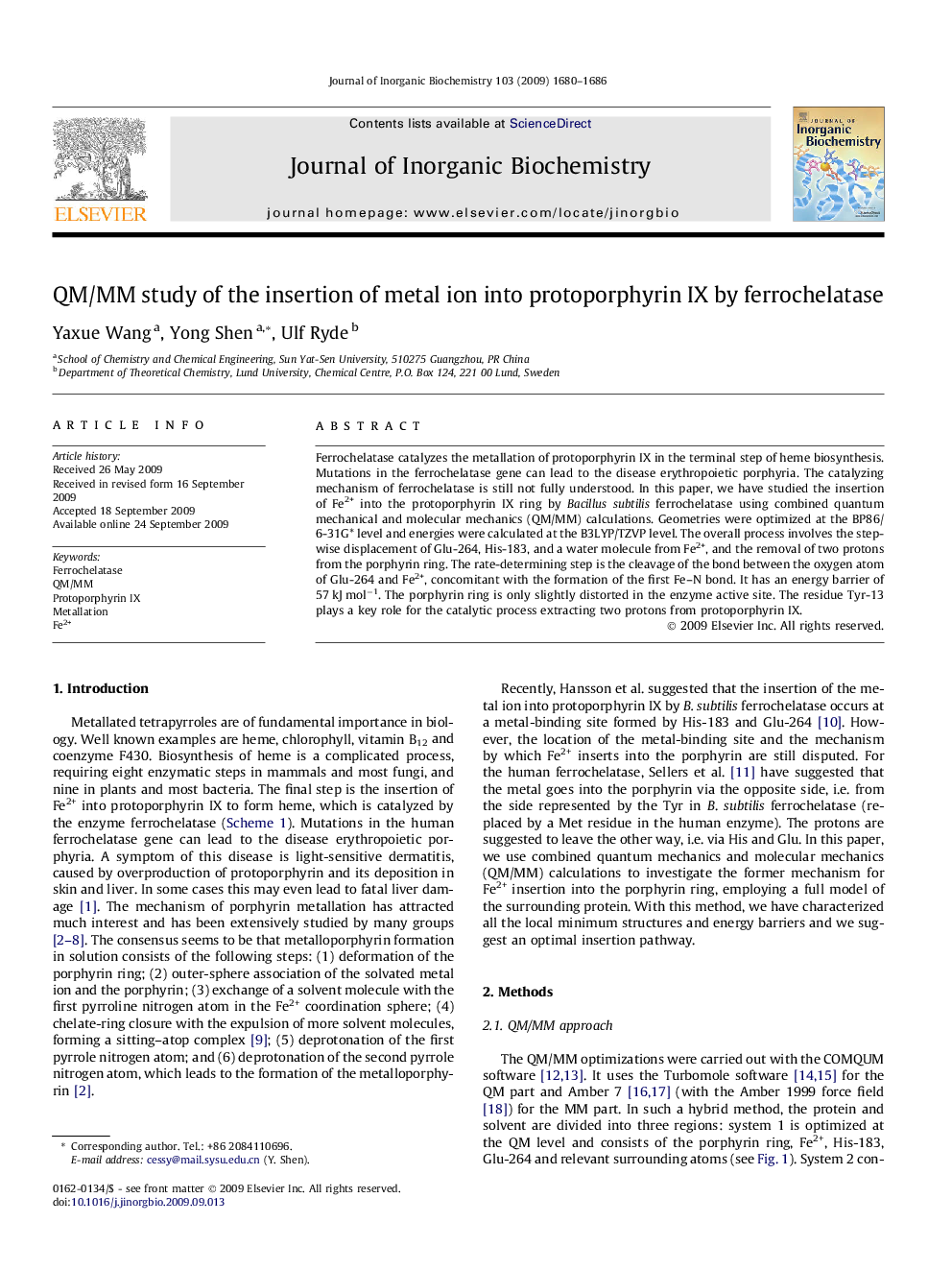| کد مقاله | کد نشریه | سال انتشار | مقاله انگلیسی | نسخه تمام متن |
|---|---|---|---|---|
| 1316217 | 976436 | 2009 | 7 صفحه PDF | دانلود رایگان |

Ferrochelatase catalyzes the metallation of protoporphyrin IX in the terminal step of heme biosynthesis. Mutations in the ferrochelatase gene can lead to the disease erythropoietic porphyria. The catalyzing mechanism of ferrochelatase is still not fully understood. In this paper, we have studied the insertion of Fe2+ into the protoporphyrin IX ring by Bacillussubtilis ferrochelatase using combined quantum mechanical and molecular mechanics (QM/MM) calculations. Geometries were optimized at the BP86/6-31G∗ level and energies were calculated at the B3LYP/TZVP level. The overall process involves the stepwise displacement of Glu-264, His-183, and a water molecule from Fe2+, and the removal of two protons from the porphyrin ring. The rate-determining step is the cleavage of the bond between the oxygen atom of Glu-264 and Fe2+, concomitant with the formation of the first Fe–N bond. It has an energy barrier of 57 kJ mol−1. The porphyrin ring is only slightly distorted in the enzyme active site. The residue Tyr-13 plays a key role for the catalytic process extracting two protons from protoporphyrin IX.
Journal: Journal of Inorganic Biochemistry - Volume 103, Issue 12, December 2009, Pages 1680–1686